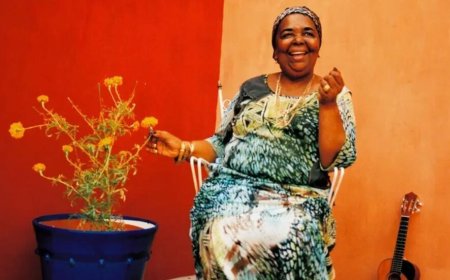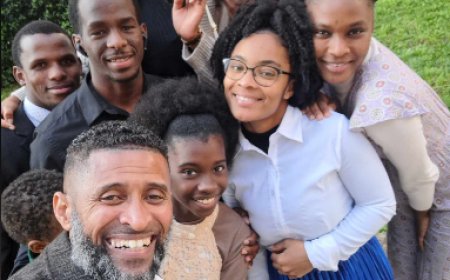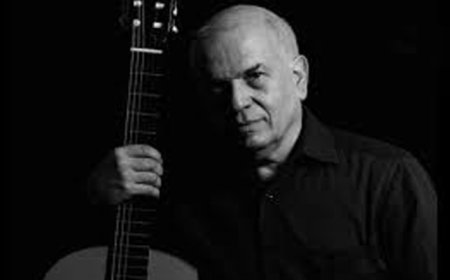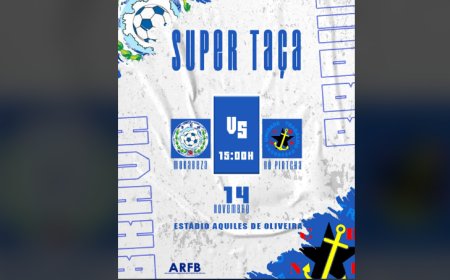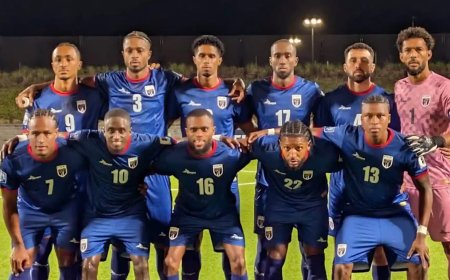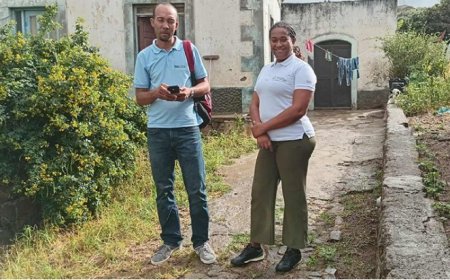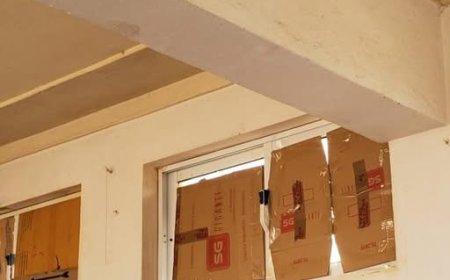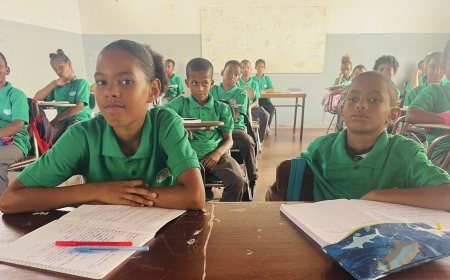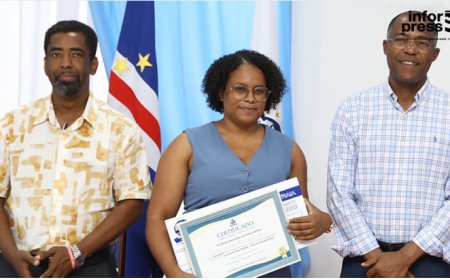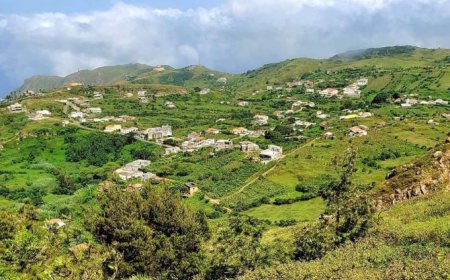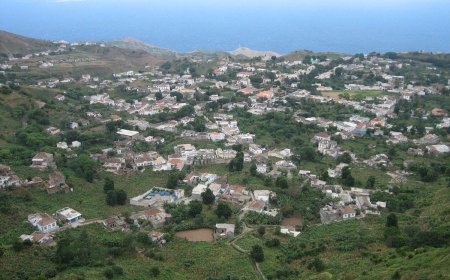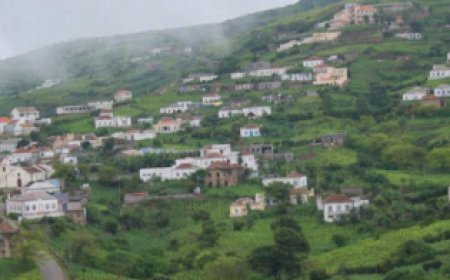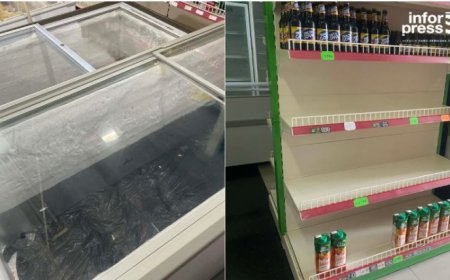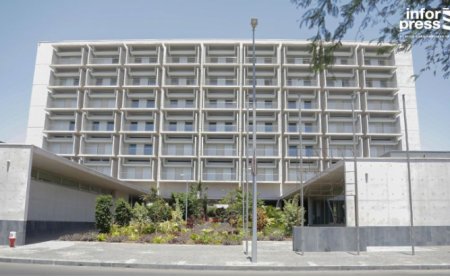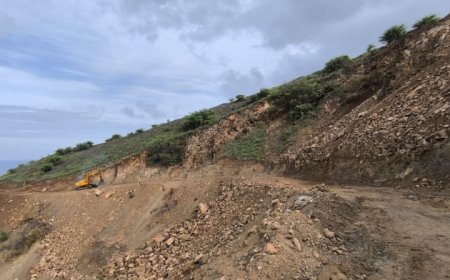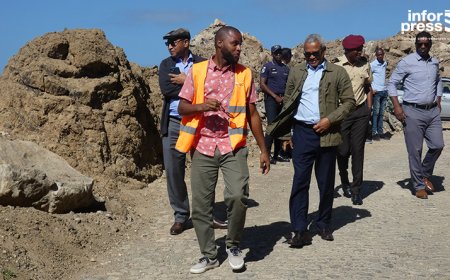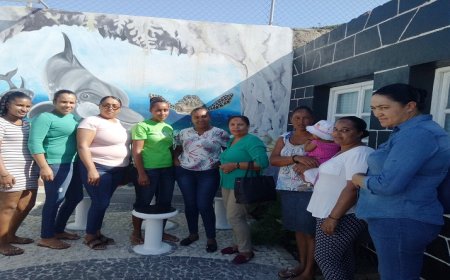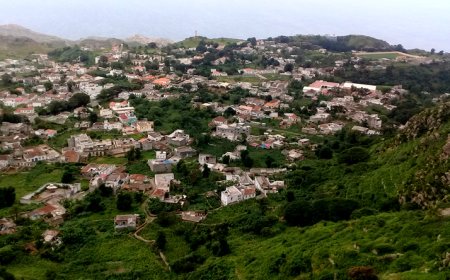Brava is one of the greenest islands in the entire archipelago.
Brava is one of the greenest islands in the entire archipelago and its wealth of flowers abounds in the eyes of those who, one day, proclaimed it the “island of flowers”.
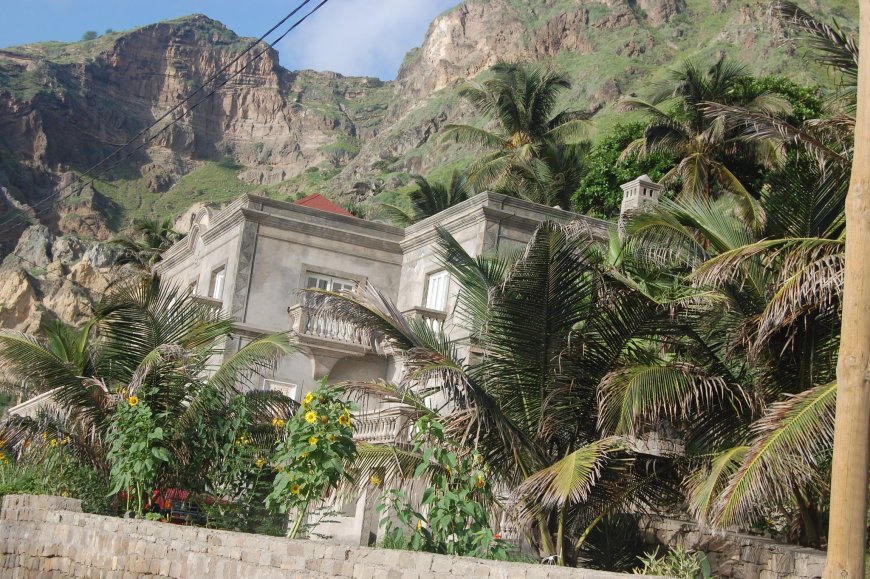
Brava is one of the greenest islands in the entire archipelago and its wealth of flowers abounds in the eyes of those who, one day, proclaimed it the “island of flowers”.
Of the inhabited islands of Cape Verde, this is the smallest. The green of this island, full of undiscovered charms, brings with it scenarios of different colors and aromas, where the deep valleys contrast with the highest peaks. With a winding coastline, the bays gain their charm, where the blue of the sea and the green of the earth contrast with the colorful boats that can be found there. Fajã de Água is a must visit.
Brava presents, along rough trails, the energetic colors of bougainvillea, the scent of jasmine and the sweetness of hibiscus. Let yourself be enveloped by the mystique of the City of Nova Sintra, the capital of the island, which has markedly colonial characteristics.
There will be no more surprising contrast than discovering the exuberance slightly smoky by persistent fog on Brava Island. So close in distance, less in the landscapes, to the neighboring island of Fogo. There are just over 60 square kilometers located to the west, covered by splendorous vegetation, lulled by the inimitable sounds of the most beautiful warm creoles by the poet Eugénio Tavares.
Creole culture is, moreover, ingrained in Brava, as if in a perennial homage to the poet. The population expresses itself, moreover, in a particularly musical creole.
The traveler coming from Fogo, for example, can disembark at the small port of Furna, protected in a charming bay that offers artisanal fishing activities, in addition to the regular visit of the catamaran connecting to Porto de Cavaleiros and the beach. This is a place where, from the outset, the first and obligatory encounter with the island takes place, between the exuberant vegetation and the eternal sea, as the Poet sang.
As on any other island in Cape Verde, the small fishing fleets essentially supply the protein needs of the population, without neglecting the herds that graze on the plateau. Brava is no exception, and everywhere you can have an appetizing fish dish, with a predominance of spotted grouper, bica, esmoregal or salmon.
From Furna to Vila de Nova Sintra, you have to overcome the famous 99 curves of the winding and slow road, which then heads southwest, towards the interior of the island, or to Fajã d'Água. Short distance, but not monotonous. The landscape registers enchanting nuances, in a scenario always dominated, in the distance, by the almighty volcano of the island of Fogo. Emotion and contemplation come together harmoniously, for the enjoyment of the traveler, even in discreet places that are not always included in the itineraries. For a thousand and one reasons, which follow one another here in an ecstatic way, some consider Brava to be the most beautiful island in Cape Verde.
It won't be difficult to understand the reasons for the baptism of the capital of the island of Brava as Nova Sintra, considered by some to be the most beautiful city in the archipelago. Portuguese Sintra was the obvious inspiration for the designation of this captivating space made up of dream houses surrounded by gardens that are always in bloom and in which there is also an abundance of lovingly cultivated vegetable gardens.
The central square Eugénio Tavares symbolizes in Nova Sintra the way in which nature decorates the island. Benefiting from unique climatic conditions, permanent humidity and freshness, flowers and trees of a surprising variety come together wherever the eye can see in a vigor that persists and renews itself throughout the year. All of this involving charming and well-preserved architecture.
Here, pleasant and serene moments of contemplation are spent, and it is not difficult to understand why Brava is also called the island of flowers and beautiful women. And also that of poets, above all because Eugénio Tavares forever left his deep mark on this place that inspired him and which he adopted with pride.
From Nova Sintra, you have to climb Nossa Senhora do Monte and penetrate the central plateau to realize the importance that these vast fields had in the History of Brava. Crops are still plentiful here, as far as Cachaço and Monte da Ponta Verde.
Moreover, there are four obligatory walking routes for those willing to spend a few days on Brava: going up from Mato to Pico das Fontainhas, the highest on the island (750m); descend from Campo Baixo to Porto de Tantum, with the respective village perched on a cliff; connecting Mato Grande to Cachaço, passing through Chão de Aguada and the house where Eugénio Tavares stopped to compose his mornas; and from Furna to Vinagre, passing below Santa Bárbara.
Fonte do Vinagre is a strange name for a peculiar spring that attracts the inhabitants of the places in this region. The water that flows from here has an acidic taste and these characteristics have earned it the reputation of providing medicinal benefits. It is assumed that the cause of the phenomenon is the existence of a subsoil where there will be an important vein of metals. In any case, despite its fame, the circumstances advise the moderate use of this mineral water. The inhabitants of the region suffer from softening problems, a fact that could be linked to the regular consumption of this water.
Since Furna, a fishing area in the northeast region of the island, is exposed to prevailing winds, you cannot always take comfort in the peace that you can find in Fajã d'Água, sheltered in the northwest area. Walking down the path from Ribeira d'Água to Fajã is a delight for the eyes, which hesitate between the lush green of the landscape and the intense blue of the sea, enjoying this authentic gift of nature.
Fajã bay is very welcoming, especially appreciated on stormy days, when other areas of the island are ravaged by the weather. Hence it is also an excellent place for sport fishermen, who are not begged to take advantage of such favorable conditions. Also, the festivities and natural conditions existing here, such as the attractive natural pool, make this a special and unique place for peaceful walks and other activities typical of the ecotourism concept, promoting a respectful coexistence between man and nature.
The welcoming characteristics of Fajã became especially well-known when they allowed it to serve as a safe haven for American whalers who worked in these parts of the Atlantic. From this convergence, which became regular coexistence, the almost exclusive emigration of the inhabitants of this area to the United States of America was born. In such a way that references to this country are common in Brava's daily life, whether in language or even in consumption habits. Which, however, does not dispense with the unavoidable football or table football, which even the girls adhere to with graceful diligence.
It is also not difficult to understand the importance of traditional music, such as colinha and, mainly, morna, in the daily life of Ilha Brava. This musical expression of poetry was born in Boa Vista but is very special on the “island of flowers”. Here, the morna sings of man's marriage to the sea, and sings above all of love and nostalgia, reflecting in it the soul of Eugénio Tavares and the migratory and adventurous saga of the people of this island.
visit us
#Cape Green#
Brava is one of the greenest islands in the entire archipelago and its wealth of flowers abounds in the eyes of those who, one day, proclaimed it the “island of flowers”.
Of the uninhabited islands of Cape Verde, this is the smallest. The green of this island, full of undiscovered charms, brings with it scenarios of different colors and aromas, where the deep valleys contrast with the highest peaks. With a winding coastline, the bays gain their charm, where the blue of the sea and the green of the earth contrast with the colorful boats that can be found there. Fajã de Água is a must visit.
Brava presents, along rough trails, the energetic colors of bougainvillea, the scent of jasmine and the sweetness of hibiscus. Let yourself be enveloped by the mystique of the City of Nova Sintra, the capital of the island, which has markedly colonial characteristics.
There will be no more surprising contrast than discovering the slightly smoky exuberance by persistent fog on Brava Island. So close in distance, less in the landscapes, to the neighboring island of Fogo. There are just over 60 square kilometers located to the west, covered by splendorous vegetation, lulled by the inimitable sounds of the most beautiful warm creoles by the poet Eugénio Tavares.
Creole culture is, moreover, ingrained in Brava, as if in a perennial homage to the poet. The population expresses itself, moreover, in a particularly musical creole.
The traveler coming from Fogo, for example, can disembark at the small port of Furna, protected in a charming bay that offers artisanal fishing activities, in addition to the regular visit of the catamaran connecting to Porto de Cavaleiros and the beach. This is a place where, from the outset, the first and obligatory encounter with the island takes place, between the exuberant vegetation and the eternal sea, as the Poet sang.
Like any other island in Cape Verde, the small fishing fleets essentially supply the population's protein needs, without neglecting the herds that graze on the plateau. Brava is no exception, and everywhere you can have an appetizing fish dish, with a predominance of spotted grouper, bica, esmoregal or salmon.
From Furna to Vila de Nova Sintra, you have to overcome the famous 99 curves of the winding and slow road, which then heads southwest, towards the interior of the island, or to Fajã d'Água. Short distance, but not monotonous. The landscape registers enchanting nuances, in a scenario always dominated, in the distance, by the almighty volcano of the island of Fogo. Emotion and contemplation come together harmoniously, for the enjoyment of the traveler, even in discreet places that are not always included in the itineraries. For a thousand and one reasons, which follow one another here in an ecstatic way, some consider Brava to be the most beautiful island in Cape Verde.
It will not be difficult to understand the reasons for the baptism of the capital of the island of Brava as Nova Sintra, considered by some to be the most beautiful city in the archipelago. Portuguese Sintra was the obvious inspiration for the designation of this captivating space made up of dream houses surrounded by gardens that are always in bloom and which also have an abundance of lovingly cultivated vegetable gardens.
The central square Eugénio Tavares symbolizes in Nova Sintra the way in which nature decorates the island. Benefiting from unique climatic conditions, permanent humidity and freshness, flowers and trees of a surprising variety come together wherever the eye can see in a vigor that persists and renews itself throughout the year. All of this involving charming and well-preserved architecture.
Here, pleasant and serene moments of contemplation are spent, and it is not difficult to understand why Brava is also called the island of flowers and beautiful women. And also that of poets, above all because Eugénio Tavares forever left his deep mark on this place that inspired him and which he adopted with pride.
From Nova Sintra, you have to climb Nossa Senhora do Monte and penetrate the central plateau to realize the importance that these vast fields had in the History of Brava. Crops are still plentiful here, as far as Cachaço and Monte da Ponta Verde.
Moreover, there are four obligatory walking routes for those willing to spend a few days on Brava: going up from Mato to Pico das Fontainhas, the highest on the island (750m); descending from Campo Baixo to Porto de Tantum, with the respective village perched on a cliff; connecting Mato Grande to Cachaço, passing through Chão de Aguada and the house where Eugénio Tavares stopped to compose his mornas; and from Furna to Vinagre, passing below Santa Bárbara.
Fonte do Vinagre is a strange name for a peculiar spring that attracts the inhabitants of the places in this region. The water that flows from here has an acidic taste and these characteristics have earned it the reputation of providing medicinal benefits. It is assumed that the cause of the phenomenon is the existence of a subsoil where there will be an important vein of metals. In any case, despite its fame, circumstances advise the moderate use of this The mineral water. The inhabitants of the region suffer from softening problems, a fact that could be linked to the regular consumption of this water.
Since Furna, a fishing area in the northeast region of the island, is exposed to prevailing winds, you cannot always take comfort in the peace that you can find in Fajã d'Água, sheltered in the northwest area. Walking down the path from Ribeira d'Água to Fajã is a delight for the eyes, which hesitate between the lush green of the landscape and the intense blue of the sea, enjoying this authentic gift of nature.
Fajã bay is very welcoming, especially appreciated on stormy days, when other areas of the island are ravaged by the weather. Hence it is also an excellent place for sport fishermen, who are not begged to take advantage of such favorable conditions. Also, the festivities and natural conditions existing here, such as the attractive natural pool, make this a special and unique place for peaceful walks and other activities typical of the ecotourism concept, promoting a respectful coexistence between man and nature.
The welcoming characteristics of Fajã became especially well-known when they allowed it to serve as a safe haven for American whalers who worked in these parts of the Atlantic. From this convergence, which became regular coexistence, the almost exclusive emigration of the inhabitants of this area to the United States of America was born. In such a way that references to this country are common in Brava's daily life, whether in language or even in habits consumption. Which, however, does not dispense with the unavoidable football or table football, which even the girls adhere to with graceful diligence.
It is also not difficult to understand the importance of traditional music, such as colinha and, mainly, morna, in the daily life of Ilha Brava. This musical expression of poetry was born in Boa Vista but is very special on the “island of flowers”. Here, the morna sings of man's marriage to the sea, and sings above all of love and nostalgia, reflecting in it the soul of Eugénio Tavares and the migratory and adventurous saga of the people of this island.
